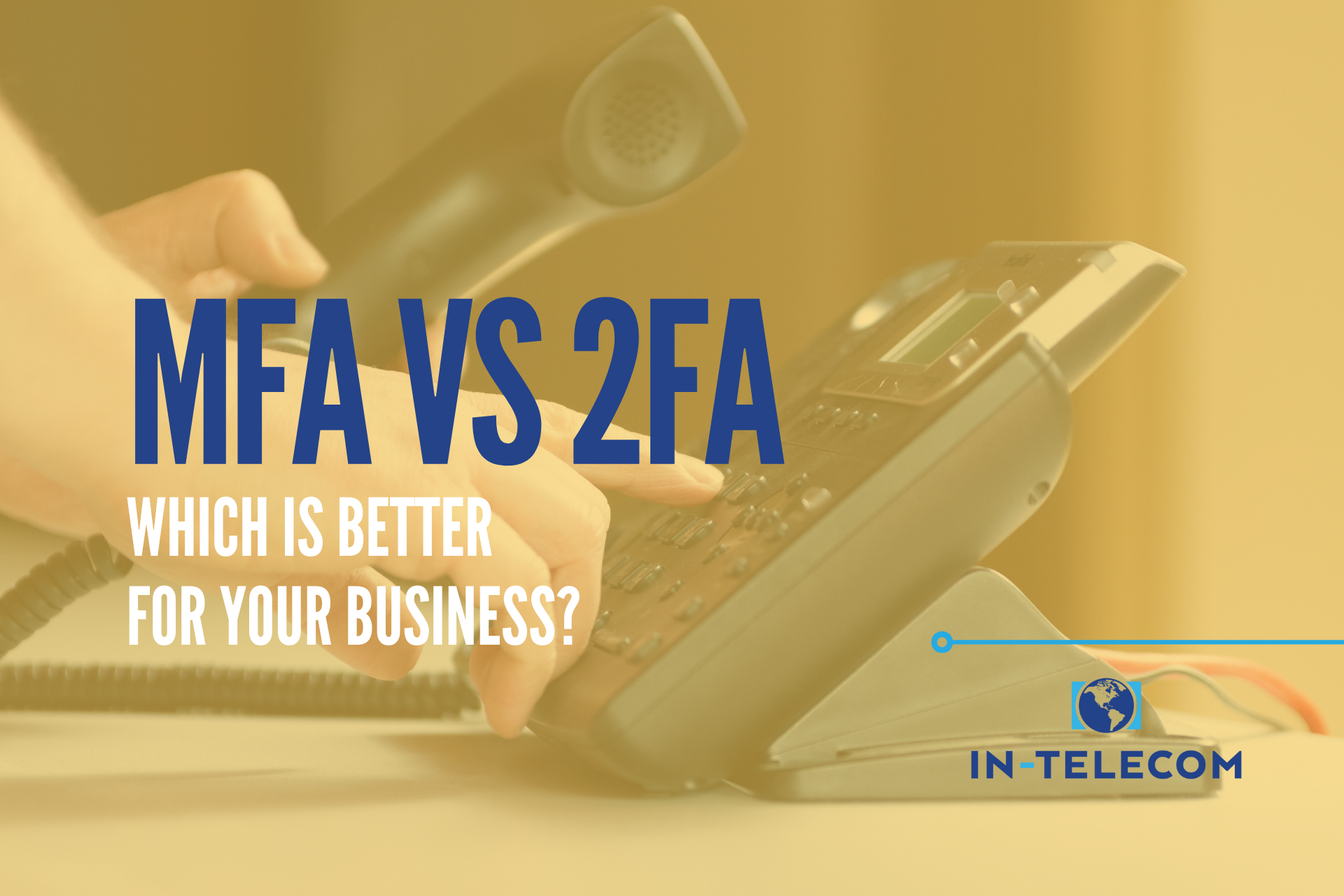
These days, it’s essential to ensure the security of sensitive information on the internet. One way to do this is through authentication, the process of verifying the identity of a user. Multi-Factor Authentication (MFA) and 2-Factor Authentication (2FA) are two commonly used methods of authentication that add an extra layer of security to the authentication process.
Why Do We Need Authentication?
Unfortunately, passwords are no longer a secure method of protecting your accounts and personal information. Massive data breaches have led to more than 8 billion password leaks and, as a result, exposed account information. To help prevent this type of exposure in the future, users and businesses can add an extra layer of protection for those unfortunate scenarios when a password is compromised. Most users will hear about two primary types of authentication: Multi-Factor Authentication (MFA) and 2-Factor Authentication (2FA).
Multi-Factor authentication involves using two or more authentication factors to verify the identity of a user. These factors can be something the user knows (such as a password), something the user has (such as a smartcard or token), or something the user is (such as a fingerprint).
2-Factor Authentication, on the other hand, requires using two distinct authentication factors, which can be either two of the same type (e.g., two passwords) or two different types (e.g., a password and a smartcard).
We’ll explore the differences and similarities between Multi-Factor Authentication and 2-Factor Authentication to understand which method best works best and in which scenarios.
What is Multi-Factor Authentication (MFA)?
Multi-Factor Authentication is a method of authentication that uses multiple factors to verify the identity of a user. Users must provide more than just a password to access an account or system. Using multiple factors makes it more difficult for attackers to gain access, as they would need information or access to more than one factor.
Types of MFA
There are three main types of authentication factors used in Multi-Factor Authentication:
- Knowledge factors are authentication factors the user knows, such as passwords or personal identification numbers (PIN).
- Possession factors are authentication factors that the user has, such as a smart card or token.
- Biometric factors are authentication factors based on the user’s physical characteristics, such as fingerprints or iris scans.
Advantages of Using MFA
Multi-Factor Authentication provides several benefits, including:
- Increased security: With multiple authentication factors, the risk of unauthorized access is significantly reduced.
- Better user experience: MFA can provide a more seamless authentication experience. Users only need to remember one password and have the required device (such as a smartcard or token).
- Compliance: Some regulations, such as the Payment Card Industry Data Security Standard (PCI DSS), require using MFA for added security.
When Should You Use MFA?
Multi-Factor Authentication is used in a variety of applications, including:
- Banking and financial services: To protect sensitive financial information and transactions.
- Healthcare: To protect patient information and ensure HIPAA compliance.
- Government agencies: To secure sensitive information and comply with security regulations.
- Online services and e-commerce: To protect user information and prevent unauthorized account access.
Multi-Factor Authentication provides an extra layer of security and is used in various industries to protect sensitive information.
What is 2-Factor Authentication (2FA)?
2-Factor Authentication is a method of authentication that requires using two distinct authentication factors to verify the identity of a user. Users must provide more than just a password to access an account or system. Using two factors makes it more difficult for attackers to gain access, as they need information or access to both factors. One of the main differences between the two types is that 2FA can use the same factor twice, whereas, with MFA, the factors must be different. It should also be noted that 2FA is MFA, but MFA is not considered 2FA.
Types of 2FA
There are several types of authentication factors used in 2-Factor Authentication, including:
- SMS: A code is sent to the user’s mobile phone via SMS, which they enter to access the account.
- Token: A physical token is combined with a password to access an account.
- Biometric: A biometric factor, such as a fingerprint or iris scan, is combined with a password to access an account.
Advantages of Using 2FA
2-Factor Authentication provides several benefits, including:
- Increased security: With two authentication factors, the risk of unauthorized access is reduced compared to using just a password.
- Convenience: Some 2FA methods, such as biometrics, can provide a more seamless authentication experience.
- Compliance: Some regulations, such as the Payment Card Industry Data Security Standard (PCI DSS), require 2FA for added security.
When Should You Use 2Fa?
2-Factor Authentication is used in a variety of applications, including:
- Online services and e-commerce: To protect user information and prevent unauthorized access to accounts.
- Banking and financial services: To protect sensitive financial information and transactions.
- Healthcare: To protect patient information and ensure HIPAA compliance.
- Government agencies: To secure sensitive information and comply with security regulations.
2-Factor Authentication provides an extra layer of security compared to just using a password and is used in various industries to protect sensitive information.
MFA vs 2FA: Which One Should You Choose?
When you’re deciding between MFA and 2FA, there are a few things that you need to consider. While 2FA may make sense for the average user, business users may want to consider MFA for its increased level of security.
How are MFA and 2FA Similar?
Both options provide an added layer of protection compared to just using a password.
- Compliance: Both methods are often required by regulations to ensure the security of sensitive information.
- Widely used: Both methods are commonly used in various industries and applications.
How are MFA and 2FA Different?
Number of factors: The main difference between MFA and 2FA is the number of authentication factors required. MFA requires two or more factors, while 2FA requires only two factors.
Types of factors: MFA allows for a wider variety of authentication factors, including biometrics, while 2FA typically uses only two of the same type (such as two passwords) or two different types (such as a password and a token).
Complexity: MFA can be more complex to implement and use than 2FA, as it requires multiple factors.
Which Authentication Method is Better?
The choice between MFA and 2FA ultimately depends on the needs and requirements of the individual or organization. MFA provides a higher level of security but may be more complex to implement and use. 2FA provides a good balance of security and ease of use but may not be as secure as MFA.
Ready to Setup an Extra Layer of Protection for Your Business?
Whether you’re looking for MFA or 2FA, we have seen that both methods provide increased security compared to just using a password and are widely used in various industries. However, the choice between the two ultimately depends on the needs and requirements of the individual or organization.
With the increasing threat of cyber attacks, it is essential to implement some form of authentication beyond just a password. Whether MFA or 2FA, using multiple authentication factors can help ensure the security of sensitive information and prevent unauthorized access.
If you’re interested in learning more about MFA and 2FA and how it can help secure your business, schedule a free consultation with our cybersecurity experts.





